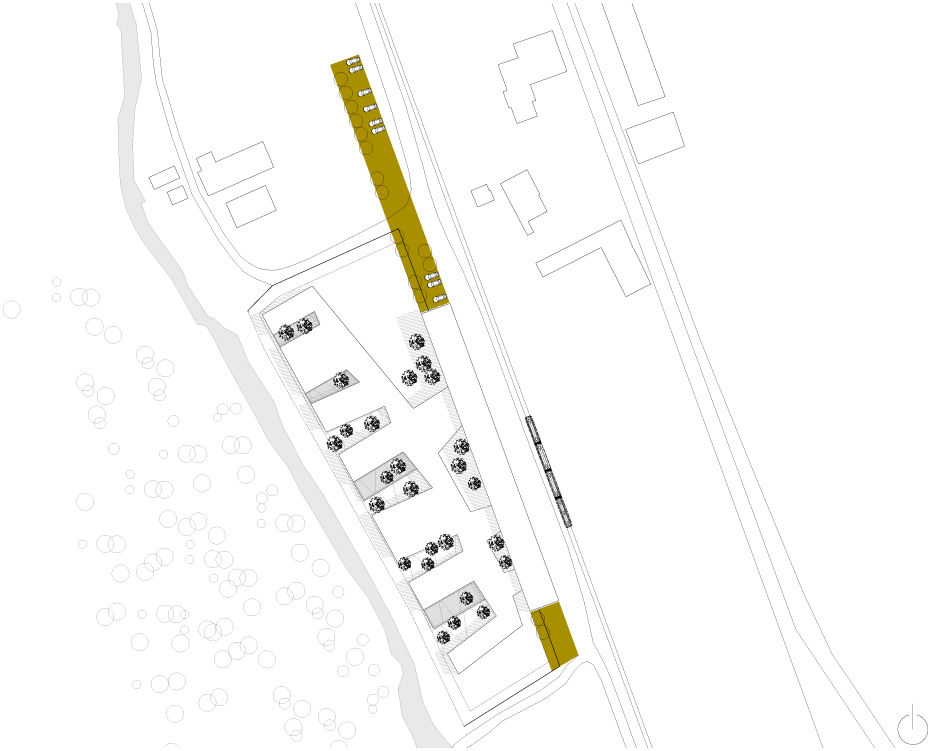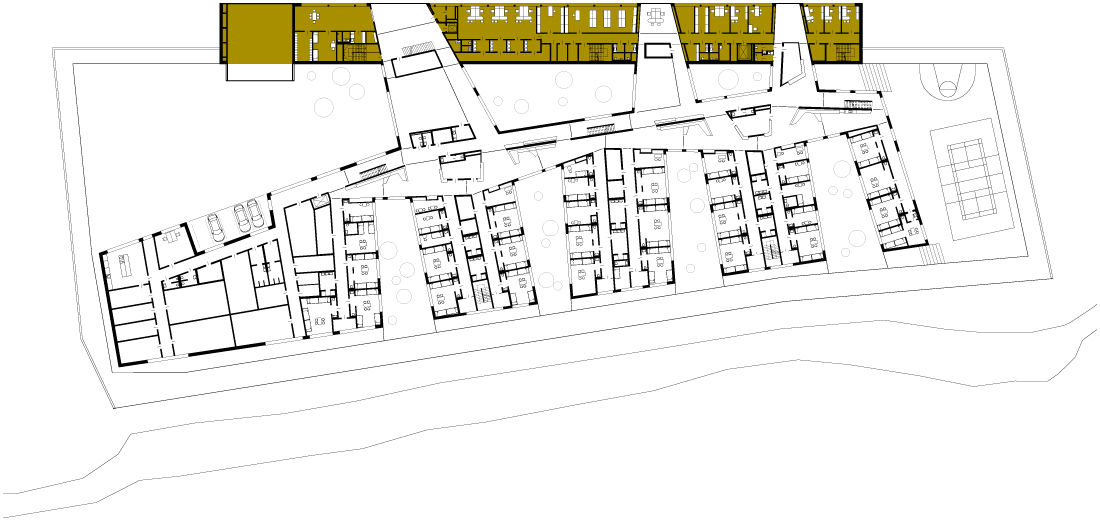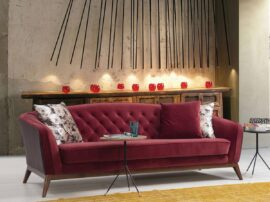The Vienna studio Sue Architekten planned the detention centre in Vordernberg. Primary goal: maintain people’s dignity
Dedicated architects often develop a strong attachment to the buildings they have planned. This is because they are proud of the projects they have realized – and because in the process of designing them they have become very familiar with the functions ‘their’ buildings serve.
With the detention centre in Vordernberg, planned by the Vienna studio Sue Architekten, it was a different story. One that wasn’t about pride or familiarity but about making the best of a difficult situation. The Vordernberg detention centre is a building complex for up to 200 people who are detained because they have no residence permit for the European Union: failed asylum seekers, illegal immigrants, etc. It was the primary goal of the architects to give these people a home during their stay at the centre – a home that allows them to maintain their dignity and that is not in any way connected with the concept of punishment. Thanks to the good cooperation with the contracting authorities (the Federal Ministry of the Interior and Bundesimmobiliengesellschaft, the company managing Austrian publicly owned real estate) the architects had the chance to pursue a new approach that is radically different from the usual accommodation in police detention centres and prisons.
The detention centre is a new building with a floor area of 10,000 square metres that was divided into two parts. The elongated administrative wing, which covers about a third of the total floor area, stands along the street. Facing away from it is the residential wing, shaped roughly like a comb, with about 6,500 square metres. The courtyards of the residential groups open out onto a stream and a mountain.
When Sue Architekten accepted the project their objective was to dramatically improve the current accommodation situation of these detainees. These people are not prisoners. They have not committed any crime – they merely are in the country illegally. Yet they are often treated like criminal offenders, serving their term in 18th– and 19th-century police prisons. With only one hour of outdoor activity per day but 23 hours spent in cells that sometimes only allow them to catch a glimpse of the outside world if they climb on the bed.
There are nine residential groups for slightly more than 20 individuals each. In addition to the bedrooms they also include a living room, a community kitchen and additional common rooms that offer the detainees much-needed private space.
One of the most important features of this detention centre is the fact that the windows are not barred. Instead the glazing in the ribbon windows is fixed in position and cannot be opened.Narrow openable flaps provide ventilation, but as they are only ten centimetres wide they prevent anyone climbing out unnoticed. The materials chosen for fitting-out the interior are of high quality and can age well, even under heavy use. The wall claddings are of maritime pine. The vinyl carpet flooring, the curtains and the special chairs will give the residential groups a bright, domestic feeling.
At the Vordernberg detention centre the approach – and the terminology – is different: with bedrooms instead of prison cells, residential groups instead of cell blocks, and communal areas instead of closed unit. The Sue architects hope that this attitude will also be felt in the daily life at the centre.
This comparatively open design is to increase the visibility of those inside. Unlike conventional prisons it invites people to look in and to look out. The residents of Vordernberg can see what’s going on inside. The detainees can see what’s going on outside. This also reflects the philosophy of Christian Ambos, Michael Anhammer and Harald Höller, the partners of Sue Architekten: “We believe that people treat each other differently if things don’t go on in secret.
We decided to work on this project because it is our belief that places like this, where unresolved social issues of our time are negotiated, are of central importance. The issues in question here are: How does Europe deal with migration? How does distribution work? Who gets the chance to share in our prosperity? In view of the tough answers to these questions currently given by the European Union we think it is particularly important to accommodate the
people concerned in a way that allows them to maintain their dignity during the period of time when the state takes over responsibility for them.
We saw some opportunities and creative space in the specifications issued by the Federal Ministry of the Interior. And we saw it as our duty to interpret and implement them in the best possible way for the detainees.
General planner: Sue Architekten ZT GmbH –
Christian Ambos, Michael Anhammer, Harald Höller
Project managers: Marco Bumeder, Monika
Liebmann, Sylvia Urban
Assistants: Barbara Wagner, Thomas Karl, Ania Korotarz, Lukas Mahlknecht, Laura
Scharf, Ulrike Straube, Simon Treml, Marie Vigne, Margitta Wagner, Arnold
Wilfing, Christoph Windsperger
Structural
engineering and building physics: kppk ZT GmbH – Klaus Petraschka
Assistants: Bernhard Höfer (PL TWPL), Mario
Lampalzer, Hannes Zerlauth (PL Bauphysik), Suleijmann Alili, Astrid Stummer
Building
services: ZENTRAPLAN PlanungsgesmbH – René Mayerhofer
Assistants: Reinhard Gerl, Manfred Fass,
Christian Dienbauer, Alexander Hahnl
Landscape
architects: rajek barosch landschaftsarchitektur – Oliver Barosch, Isolde Rajek
Assistants: Iulia Sarb
Cost
management & tender documentation: Buchegger 7 Baumanagement GmbH – Gerhard
Buchegger
Assistants: Frank Hentschel
Fire
safety: Norbert
Rabl ZT GmbH- Harald Kraus
Assistants: Verena Gottstein-Salamon
Flood protection: Gruppe Wasser– Raimund Taschke
Assistants: Peter Harland
Medical technology: ZT Mader – Peter Mader
Kitchens: archipol consulting GmbH – Helmuth
Zikuda
Photos: Hertha Hurnaus
















vordernbergy